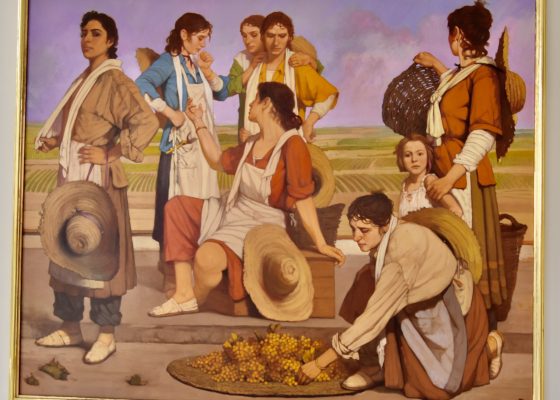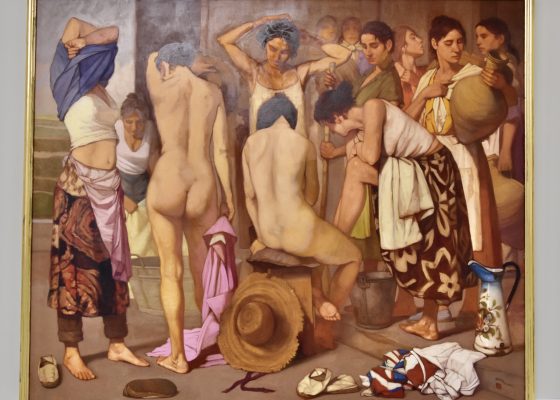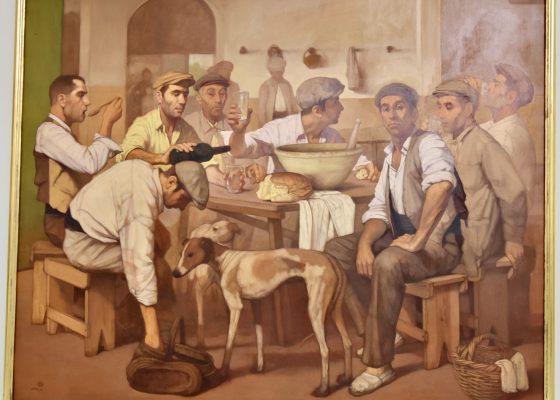Jerez – Where You’ll Learn to Love Sherry
This is my third post from the spring 2024 SATW Canadian Chapter meeting in Andalusia, Spain. In the first post I described a number of the sites associated with Christopher Columbus around the city of Huelva, notably La Rabida Monastery. In the second I extolled just a few of the many reasons to visit the fabulous city of Seville. In this post our small group will learn the secrets of how Spain’s most iconic wines are made in the city for which those wines which we call sherry are named. Along the way we will learn to love sherry and the city from which it comes, Jerez.
History of Jerez
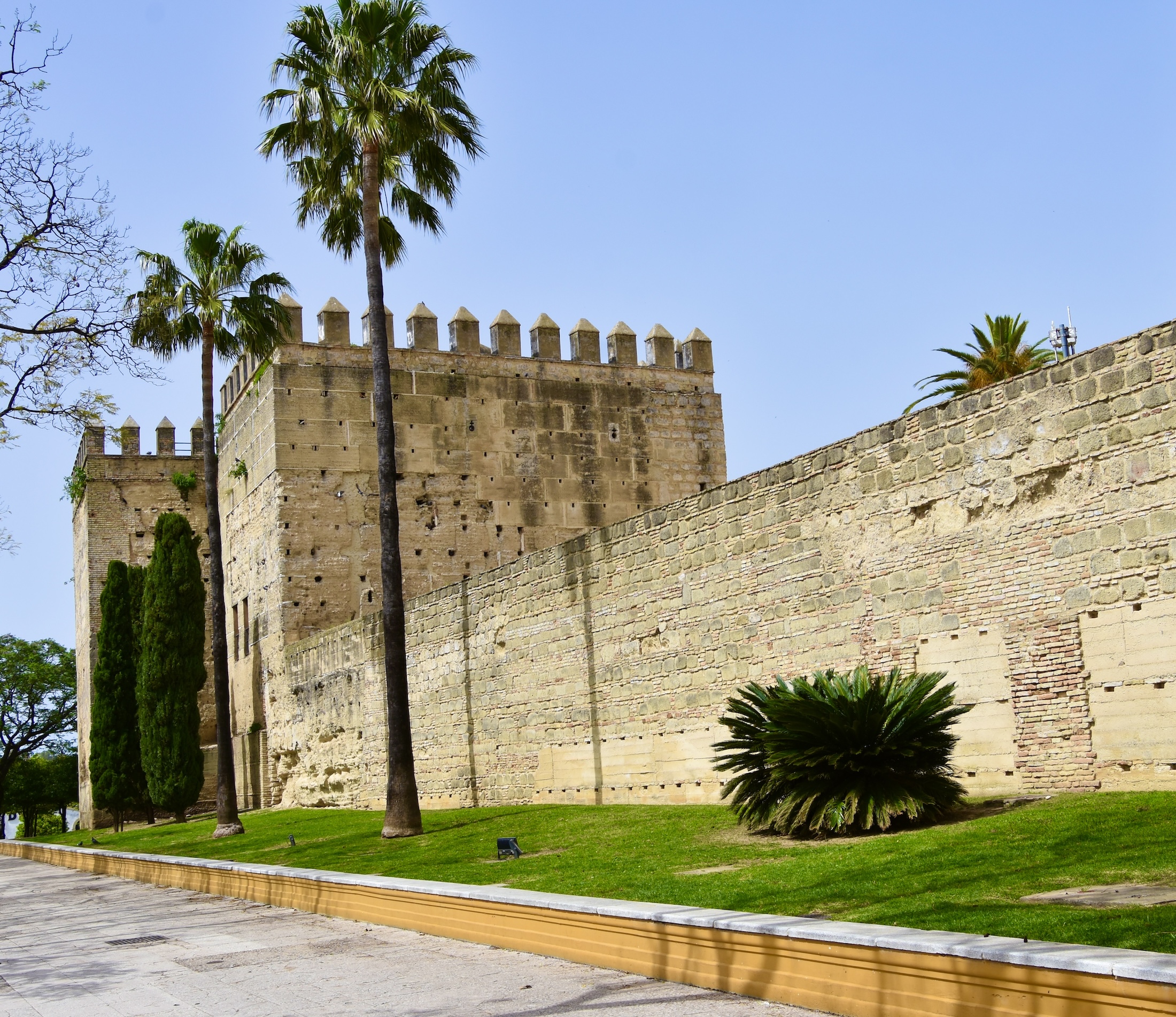
Like many Spanish cities, Jerez has a history that includes prehistoric settlement, an extensive period of Roman rule as the settlement of Astia Regia some 8 kms. from the present city followed by the Visigoths and then the Umayyad conquest of the 8th century. Islamic rule continued for some 600 years under various dynasties, most notably the Almohads who essentially built what is recognizable as the city of Jerez today during the 12th and 13th centuries, including the Alcazar whose walls are pictured above. The name Jerez is a corruption of an Arabic word sharish and up until quite recently was spelled Xeres.
After the Almohads built up the city they failed to keep it, losing a series of battles to various Christian armies in the mid 1200’s and finally losing total control in 1264. Jerez really took off, along with other cities of this part of Andalusia like Seville and Cadiz, with the discovery of the New World and the prosperity brought to Spain by exploiting the riches of South America and Mexico. It was during this period that it attracted a large foreign population that began making the wines for which the city is synonymous and which continues to be the city’s economic backbone to this day. Although Jerez is not a tourist magnet like Seville or Cadiz, it is a very worthwhile destination, not just for the wines, but also for flamenco dancing and for its famous equestrian farms where the finest horseflesh in Spain in raised.
A large part of the centre of the city is pedestrianized and our group had a walk through much of it with a local guide. Orange trees provided not just shade, but a wonderful fragrance that wafted through the air in marked contrast to the exhaust fumes and honking horns of many cities. Spain has come so far so fast in recognizing that cities should above all be walkable and pleasant to be in, that it is showing the world how this can be done and Jerez is a prime example.
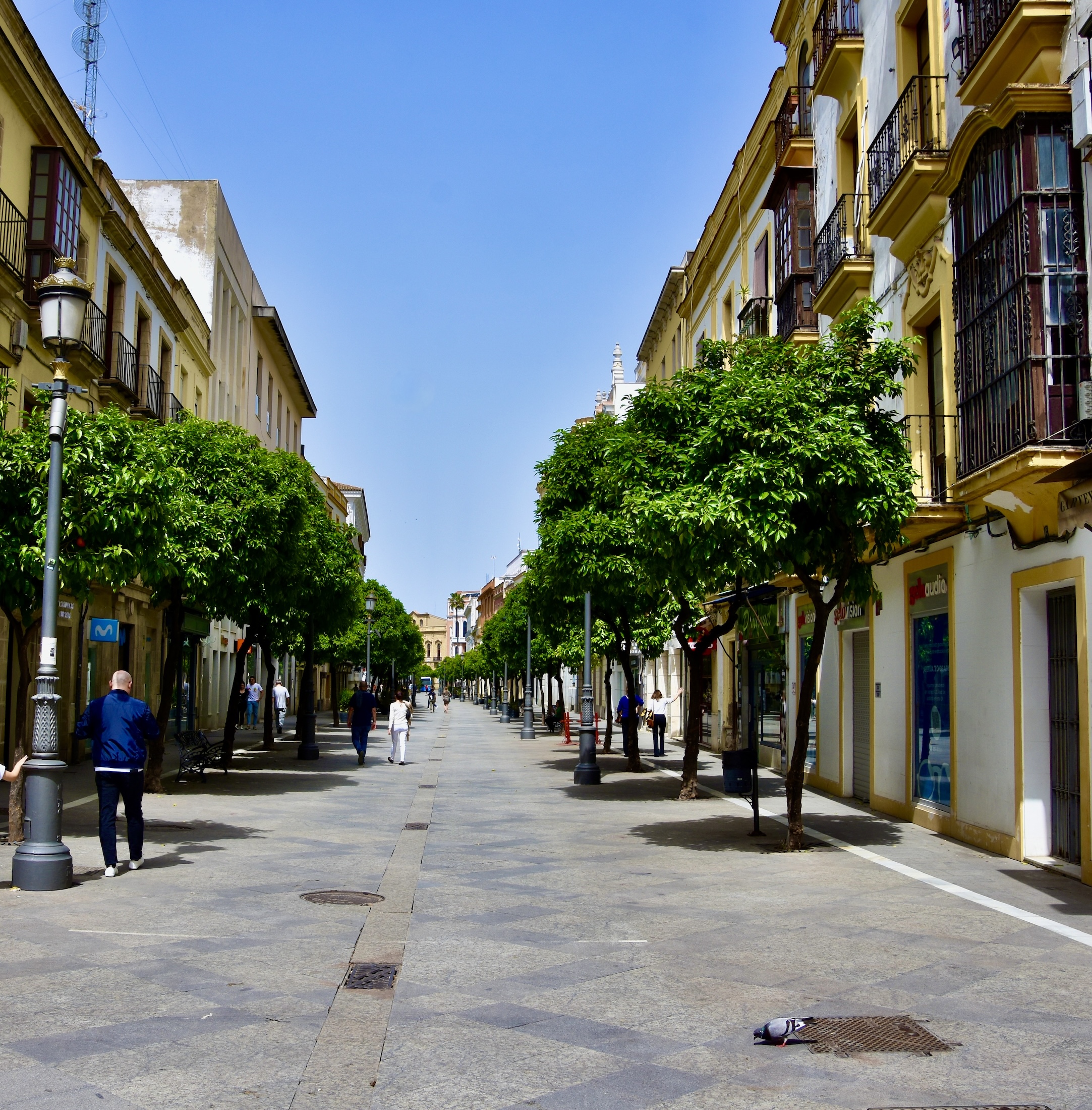
This is the old city hall recognized as Spanish National Monument of Cultural Importance since 1943
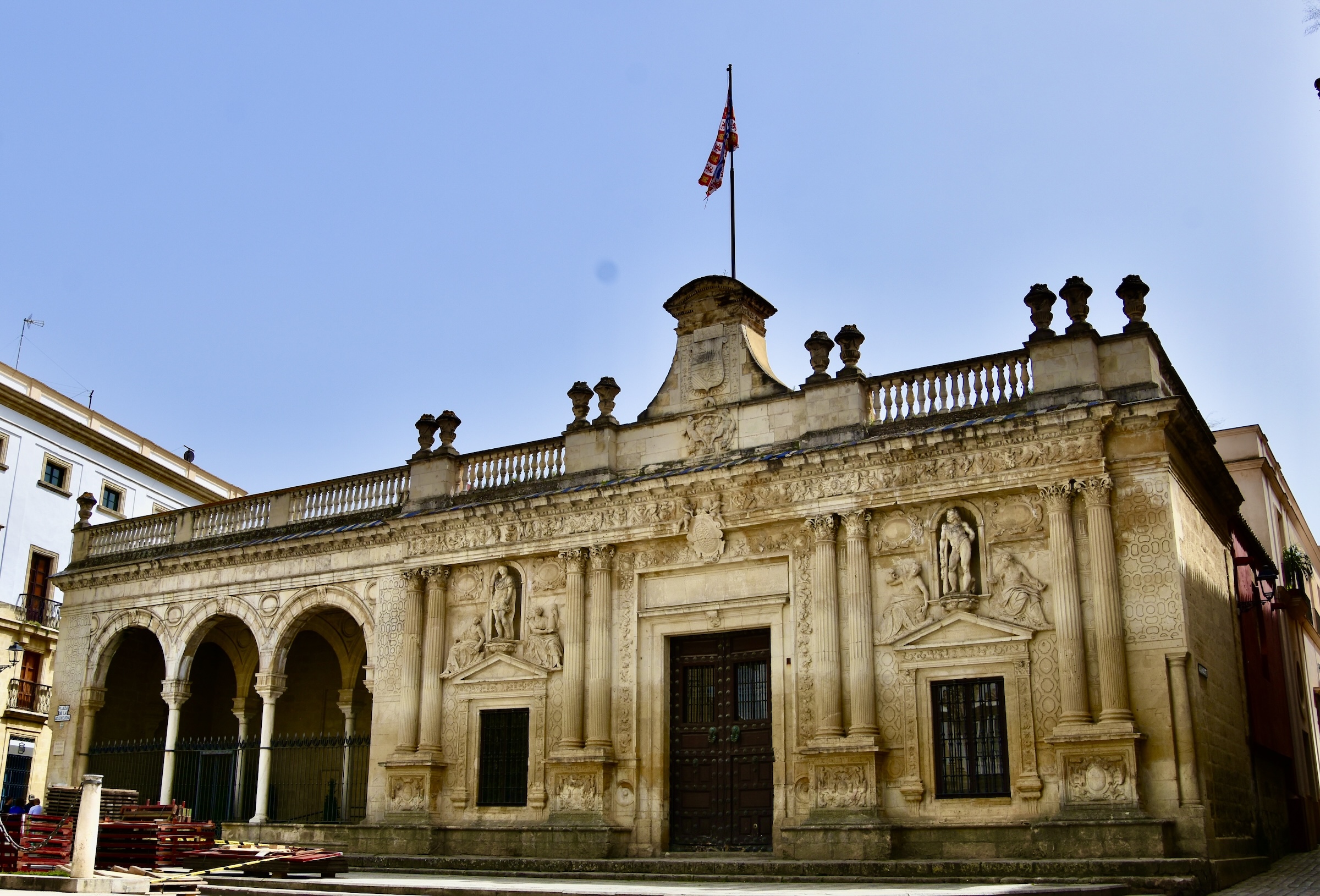
The Jerez cathedral, built in a combination of Gothic, Baroque and Neoclassical styles, gives it an outward appearance that is quite unlike any other church I’ve seen in Andalusia.

Beside it is the requisite bell tower which is actually older than the cathedral and like most in this part of Spain was first built as a minaret for the mosque that once sat where the cathedral is now. After the reconquista it was reconstructed by adding the two top rooms where there are eight bells dating from 1566 to 1928, each with its own name and distinct toll. The tower can be climbed for the best view in Jerez, but unfortunately we did not have the time as we had a date to meet a lady who was going to give us a private tour of one of the most distinguished wineries in Jerez.
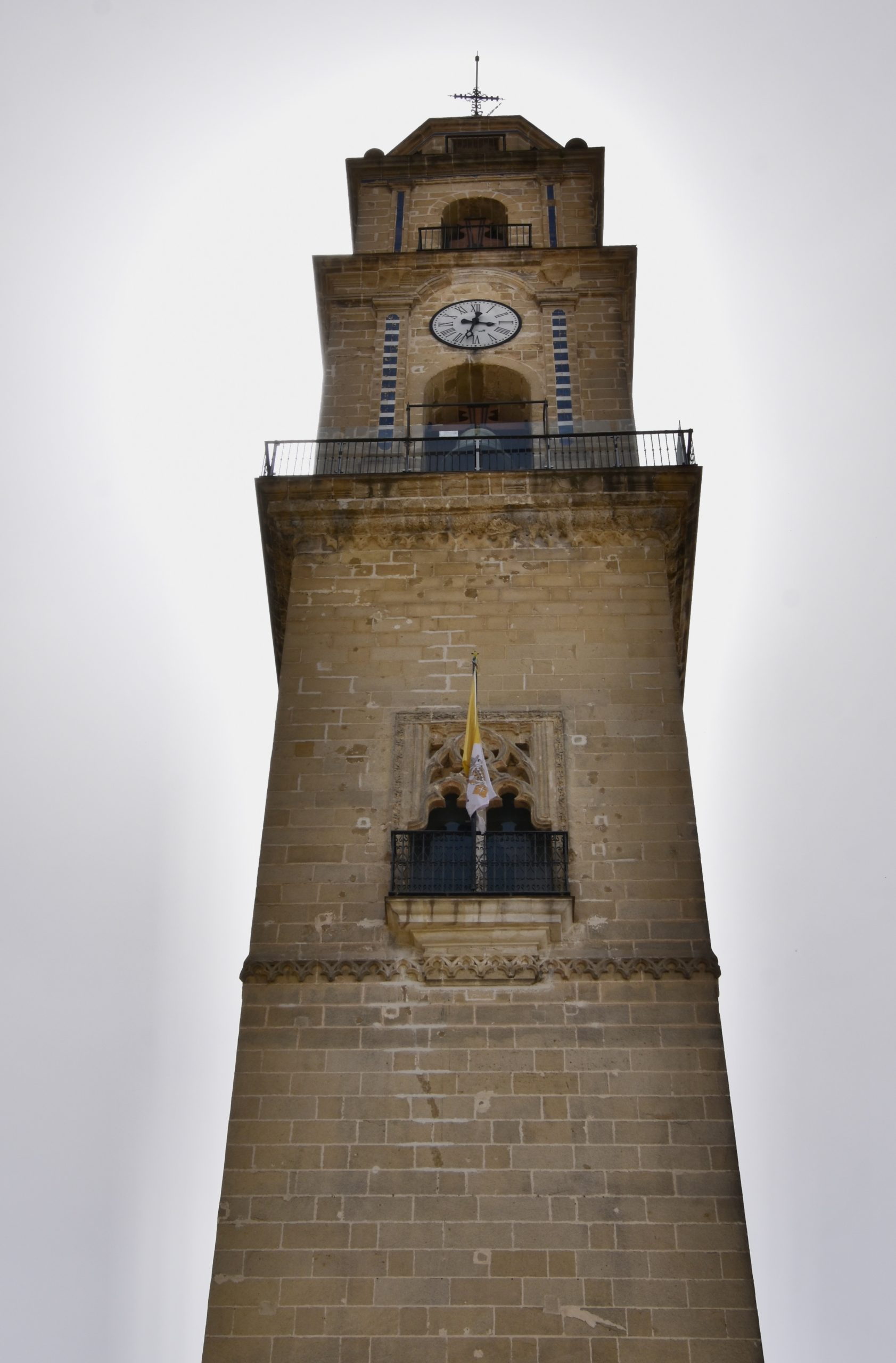
Just before getting back on the bus to go to the winery we passed by this statue of the most famous name associated with the Jerez wine industry, Tio Pepe.
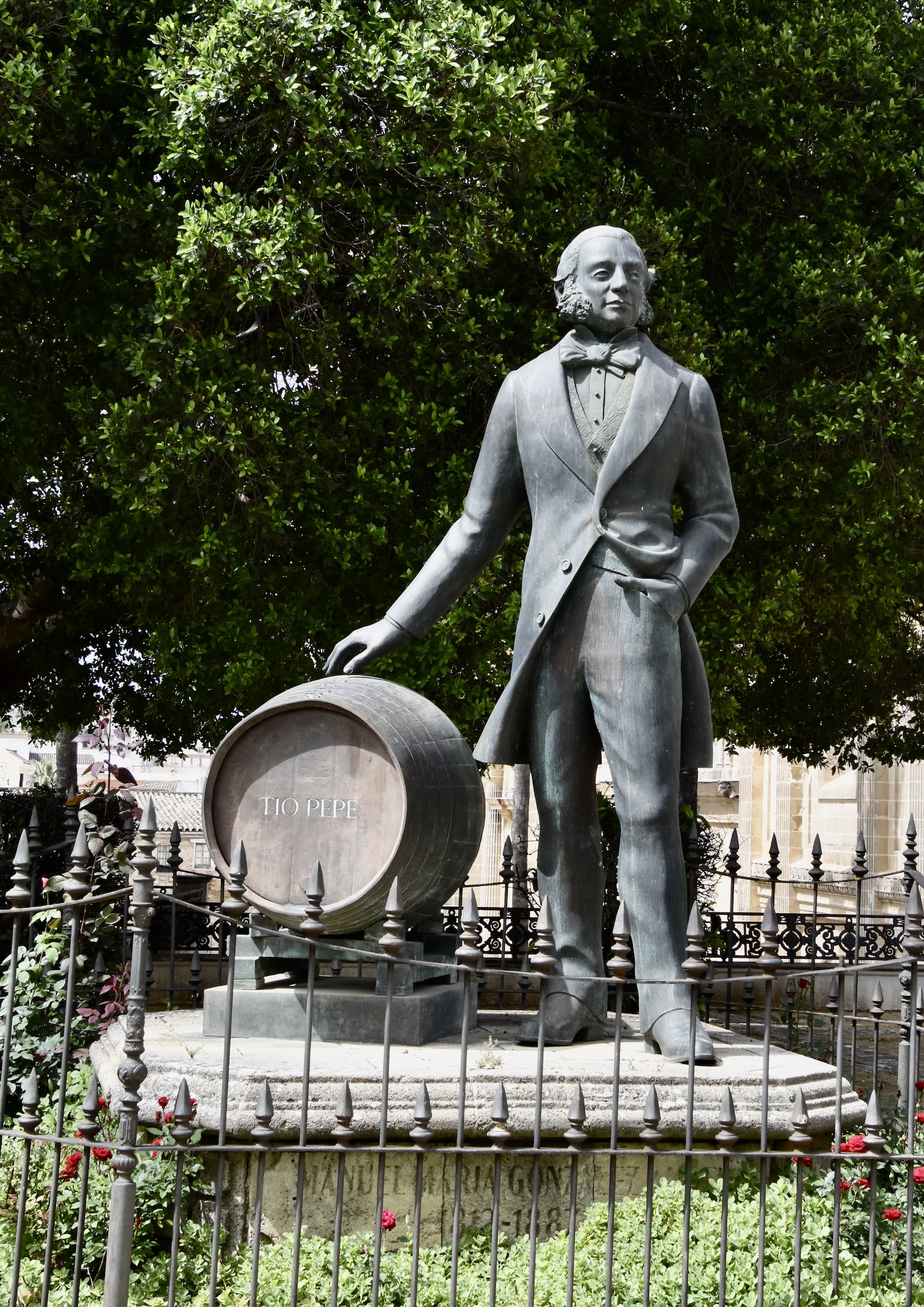
Tio Pepe was a real person, the uncle of Manuel María González Ángel, who started producing the sherry in 1835 that became world famous and named after his ‘Uncle Joe’ for the sage advice he had given him at the outset of his enterprise.
So let’s go see how sherry is produced and taste some of the many varieties.
Real Tesoro Bodega
On the outskirts of Jerez we find Bodega Real Tesoro one of the oldest and largest producers of sherry in the world with roots going back to 1760. It is a huge complex that combines both modern and traditional buildings along with an equestrian farm and a notable private art gallery. Our gracious host Juliana greets us in a room filled with precious antiques including this 15th century Italian tapestry.
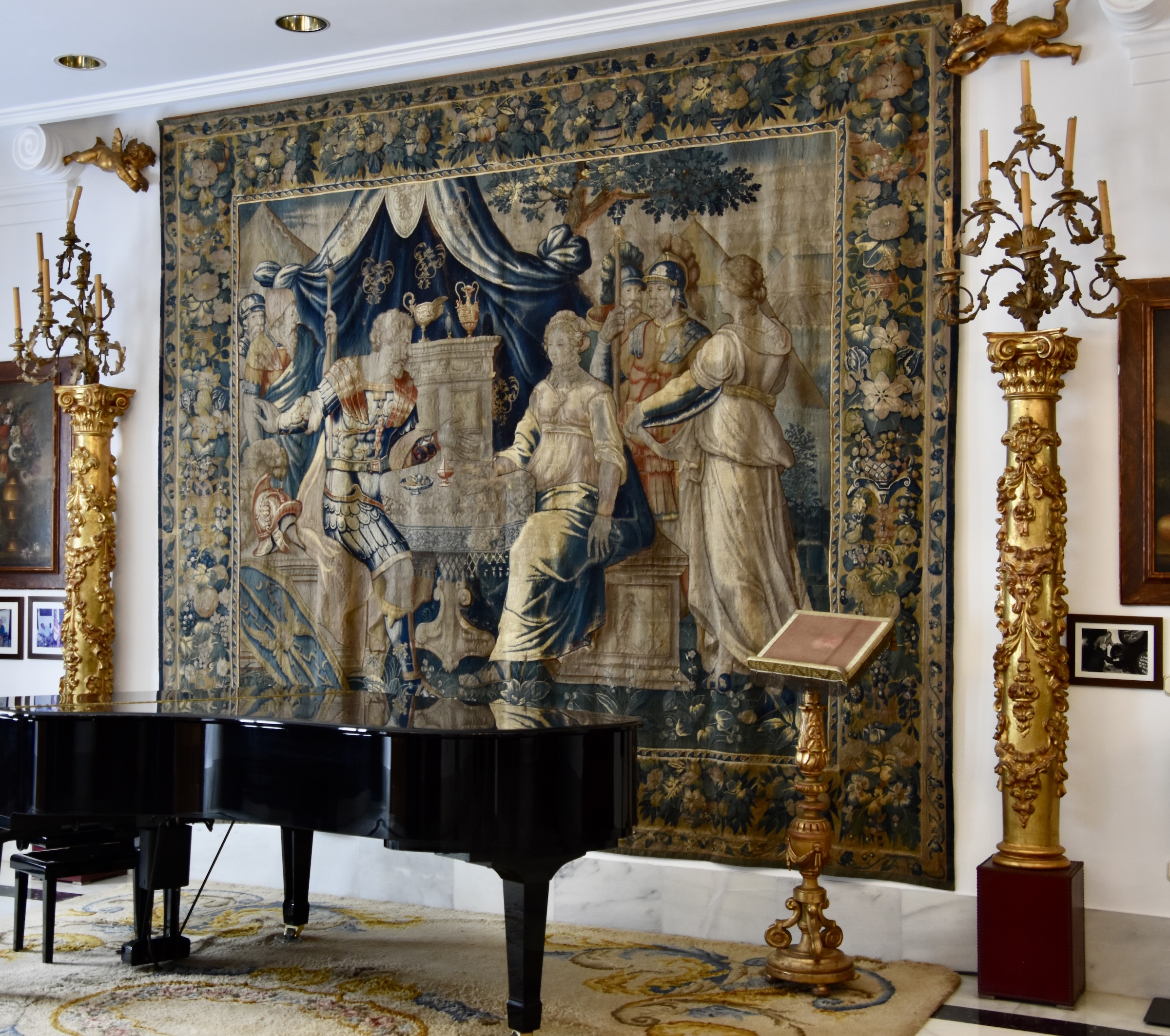
She then takes us into a room where there are a number of very fancy wine barrels such as this one which has the flags of some of the countries where Real Tesoro sherries have traditionally been exported.

The name Real Tesoro translates as Royal Treasure and indeed many members of European royalty have been customers of this bodega including the King of Spain as attested by this barrel reserved exclusively for the Spanish royal family.

It is time now to learn how the various types of sherry are made, something I confess I have no idea about other than that they are fortified wines with a higher alcoholic content than traditional wines. How they get this way I haven’t a clue.
First of all Juliana explains that only three varieties of grapes are used in producing all varieties of sherry – palomino, moscatel and Pedro Ximenez. Palomino produces the drier version which is about 90% of all sherries, while the other two make for the sweeter varieties.
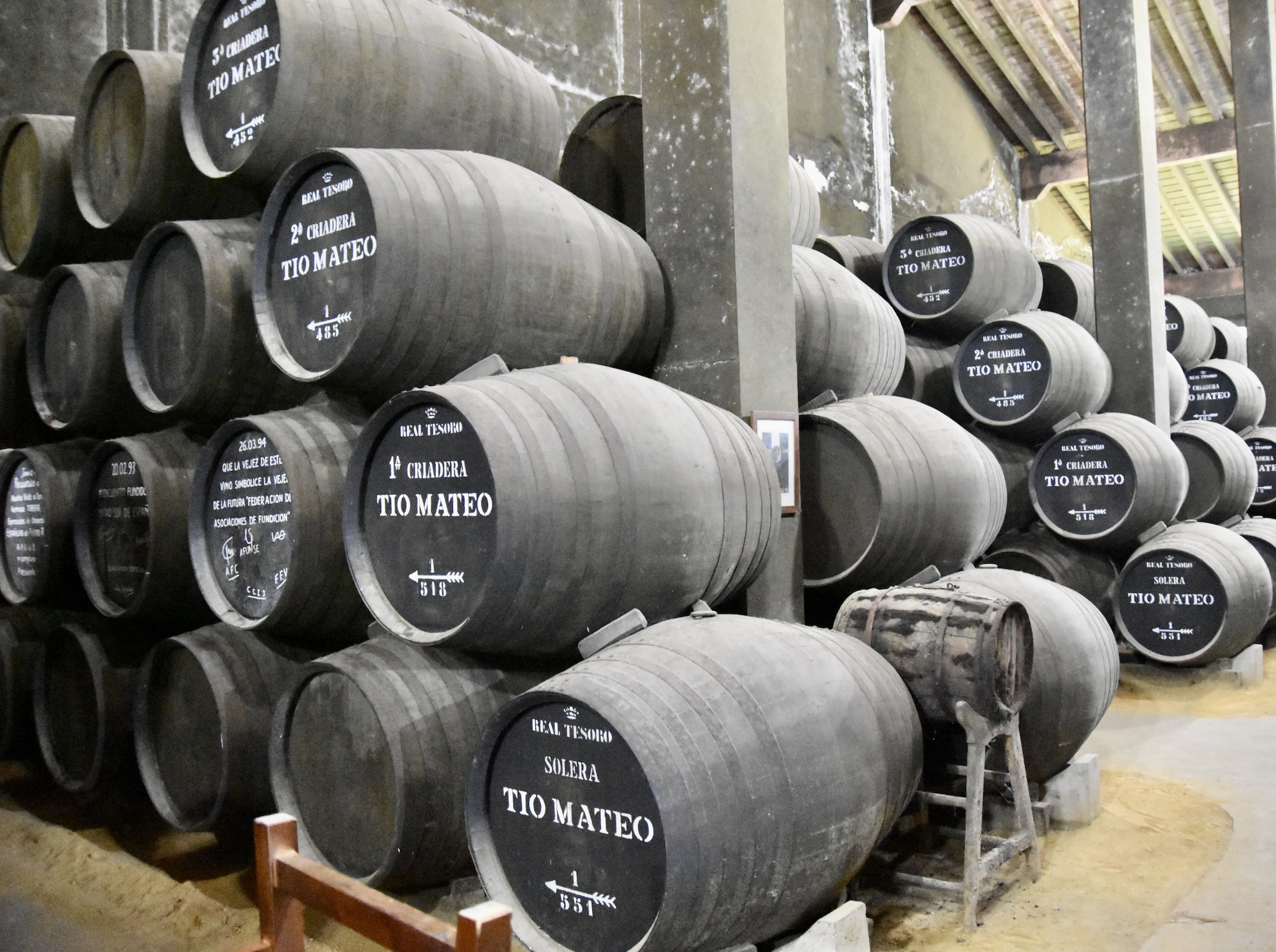
An important distinction between wine and sherry is that wines are traditionally aged in cellars below ground while sherry barrels are stored at ground level and in a layer of four barrels or casks in a system known as solera y criaderas which is best explained by following this link. Essentially it’s a process that gradually combines the grapes from four different years into a single finished product found in the barrels at the bottom of the stack. Once this is complete the barrels are removed to a storage space for further aging which we will visit later on this tour. When fermentation is complete to the satisfaction of the maker, a grape spirit is added to make sure that no further fermentation takes place. This is in contrast to port where the alcohol is added halfway through the fermentation process producing a much sweeter libation than sherry. The addition of this small amount of alcohol is what creates a ‘fortified’ wine.
Interestingly the solera y criaderas system only dates from the late 18th century and just came into widespread use by the early 20th century. The reason this is interesting is that a wine known as sherry has been produced in Jerez since the days of the Almohads. Its widespread popularity can be traced back to an act of piracy. In 1587 Sir Francis Drake sacked the city of Cadiz in what is often referred to as ‘the singing of the King of Spain’s beard’. He made off with almost 3,000 barrels of sherry and it created a sensation back in England where it led to the oft cliched view of English men and women as sherry lovers. Obviously the change to the manner in which sherry was made did not impact the English as they are still the biggest importers of it in the world.
After, sort of getting an understanding of how sherry is made, Juliana led us outside to have a look at some of the prize horses that are stabled at Real Tesoro Bodega.
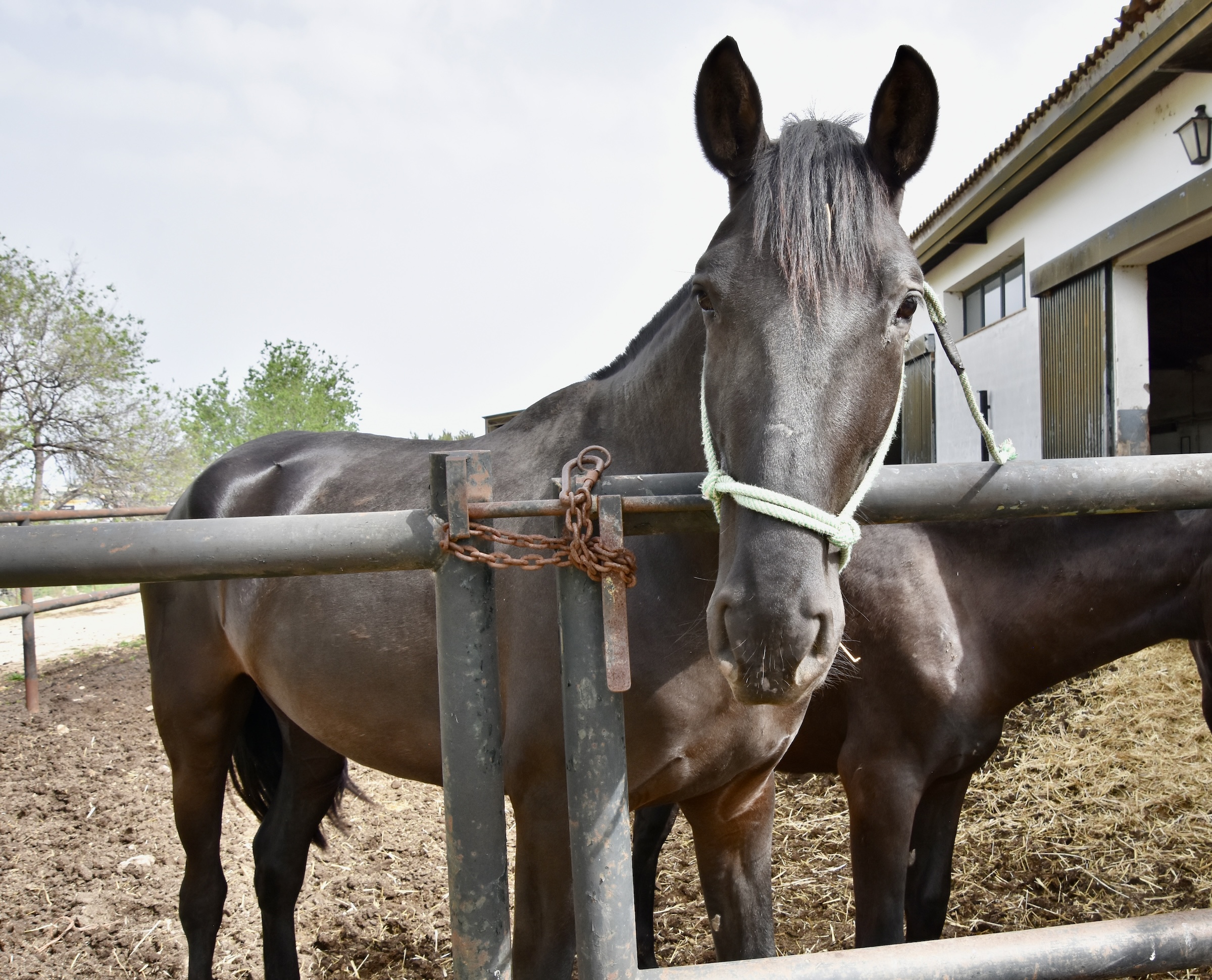
They are indeed beautiful and curious creatures, some of which once a year get to participate in the Carriage Parade held on the first day of Feria in Seville. After admiring the horses, Juliana took us into the room where the carriages and tack are stored. This 19th century Landau was but one of a number of exquisitely preserved carriages that have taken their place in the Feria parade.
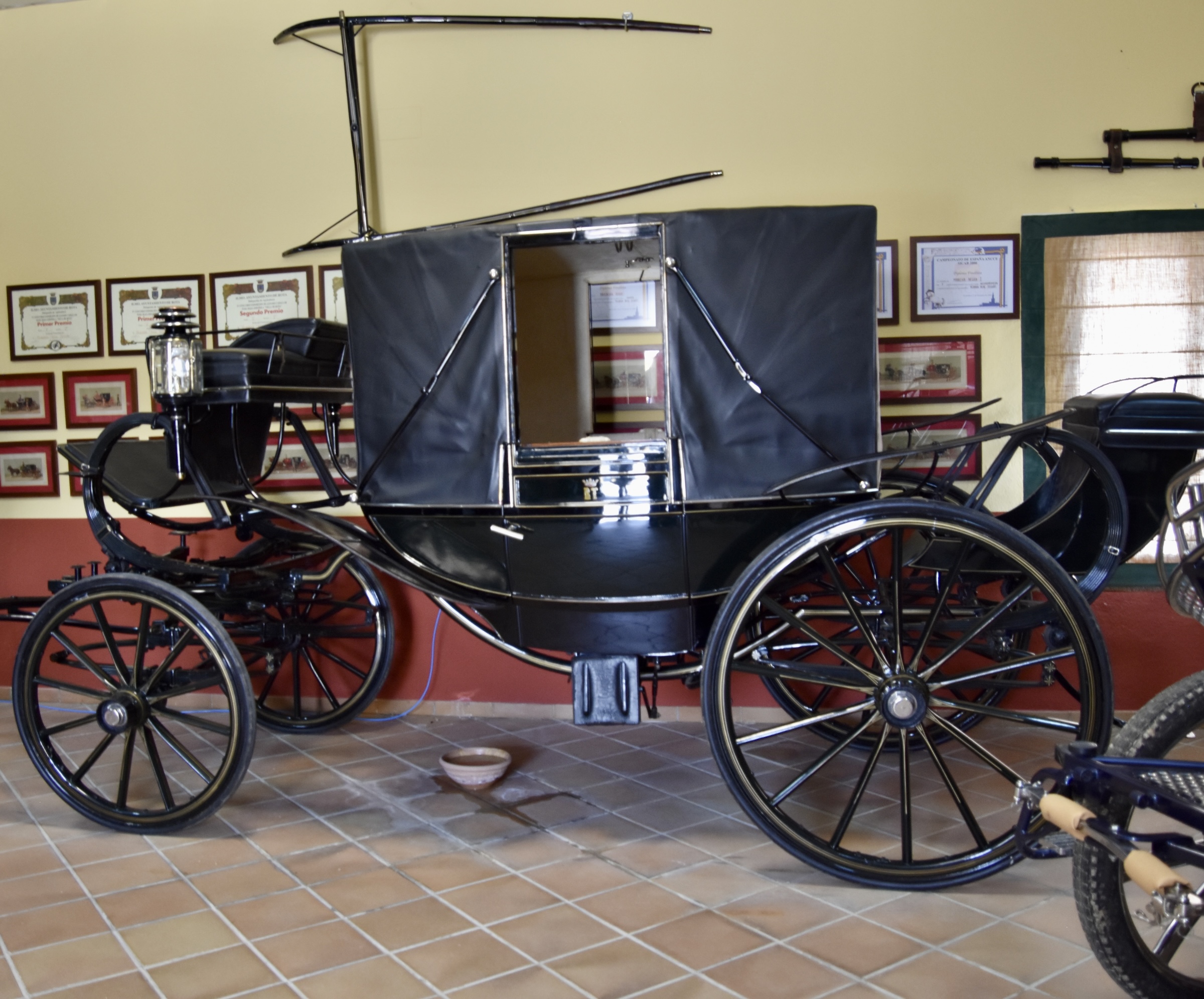
The final building we entered on this tour of Real Tesoro Bodega outside Jerez was the massive storehouse for aging the finished product.

There are over 25,000 barrels of sherry on the bottom floor of this building. I’ve visited a lot of wineries in my time, but I’ve never seen a vast display like this.
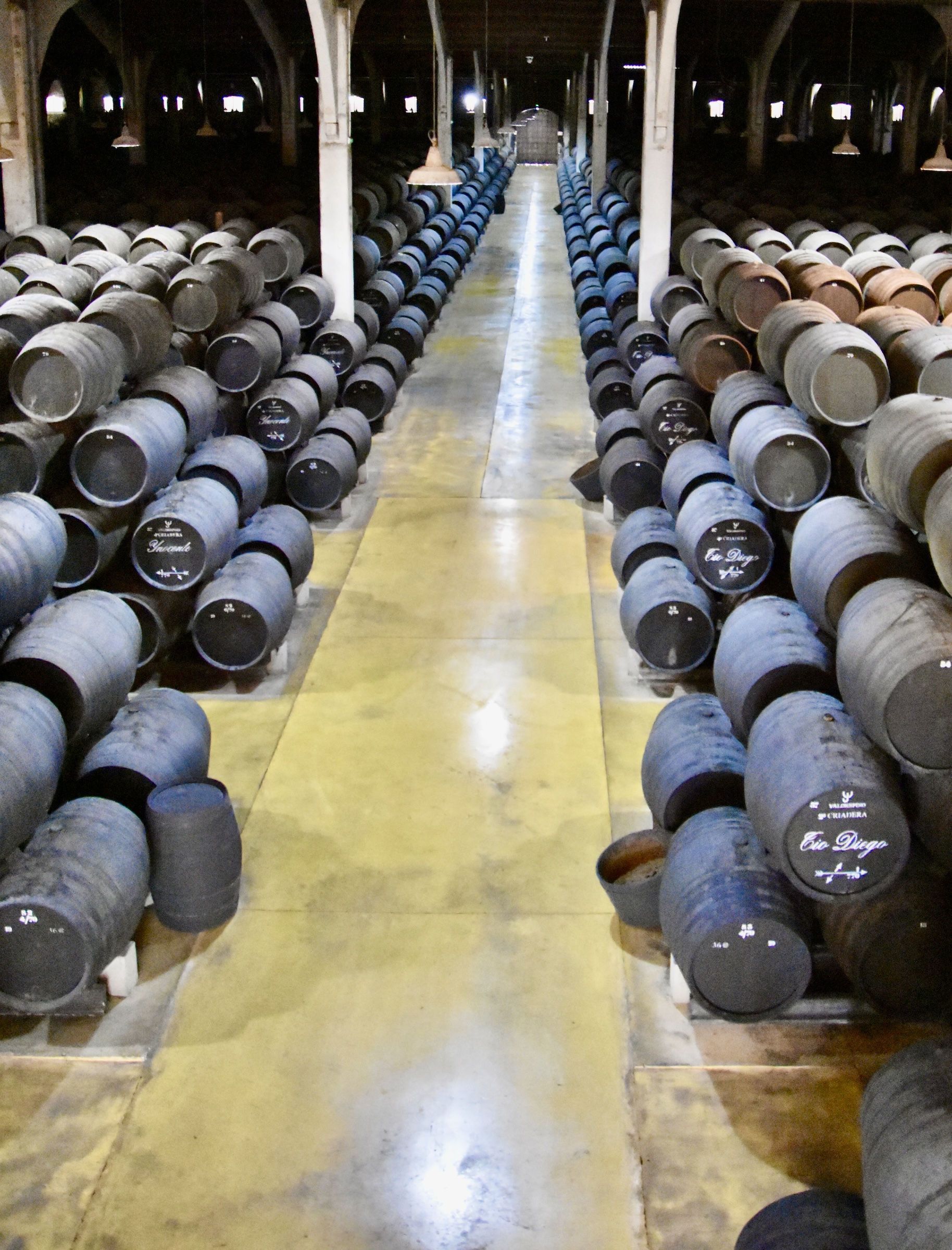
After viewing the sherry barrels Juliana leads us up to the second floor which is where the largest private art collection in Jerez is housed.
The Suite Vollard is a series of 100 etchings produced by Pablo Picasso between 1930 and 1937.

Other artists whose work is on display include Salvador Dali, Joan Miro and the Colombian artist Fernando Botero whose fascination with obesity is something I could never buy into.
Actually the artworks I enjoyed the most were a series by local artist Carlos Ayala commissioned specifically for Bodega Real Tesoro depicting wine making scenes from the past featuring the different roles of men and women in the process. Here is a small gallery of those paintings plus one of El Matador. Double click to open one and double click again to enlarge.
- Harvesting Pedro Ximenez Grapes
- Making the Sherry Barrels
- Pressing the Grapes
- Washing Up After the Harvest
- Socializing After the Work is Done
- El Matador
It was now time for what we had all been waiting for, the tasting of the Jerez sherries.
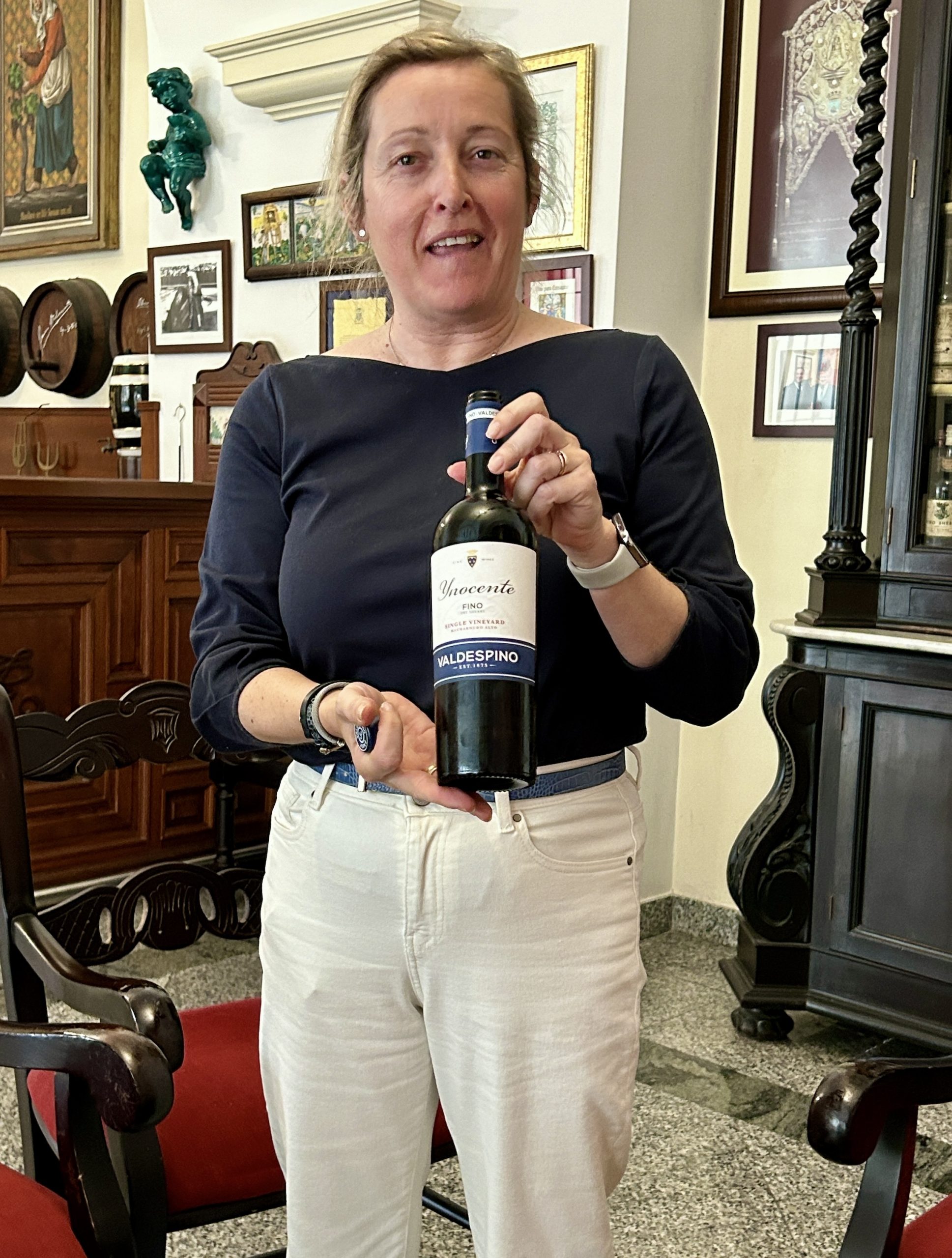
Bodega Real Tesoro produces a wide variety of sherries under a number of different labels. The Valdespino label has roots going back to 1264! All told we tasted five of them going from the driest to the sweetest starting with Valdespino Inocente Fino which is made from the palomino grape and which is apparently the only one still fermented in oak butts which are really big barrels. It is the driest of all sherries and since I like my wines very dry, this was my favourite.
Next up was Valdespino Contrabandista Amontillado with this very colourful label. This is the same grape as the Fino, but aged for 16 years in two different processes and then having a tiny amount of Pedro Ximinez grapes added to make it medium sweet. The name amontillado refers to the colour, being darker than fino, but lighter than oloroso. I have always associated the name with Edgar Allan Poe’s The Cask of Amontillado in which a murderer lures his victim with the promise of sampling a fine amontillado which turns out not to exist.

Speaking of oloroso, that was our next tasting was an Almirante Oloroso which the label makes clear is sherry whether spelt Jerez or Xeres. These sherries are made by a different process than the finos and amontillados and are noted for their fragrance from which the name oloroso or ‘sweet smelling’ derives. They can be dry or medium dry, but are always darker in colour and more full bodied than the first two. I was surprised at how good this sherry tasted despite its relative sweetness and I think much of that is attributable to the beautiful aroma it gives off.

Our fourth Jerez sherry was Moscatel Promesa which as the name denotes, is made from the naturally sweet moscatel grape. These are sweet dessert wines that are best served slightly chilled as were our samples. I have always had a prejudice against the moscatel or as it is known in most places, muscat grape because I don’t like sweet wines. However, when served properly and with the right accompaniment it’s actually pretty damned good.
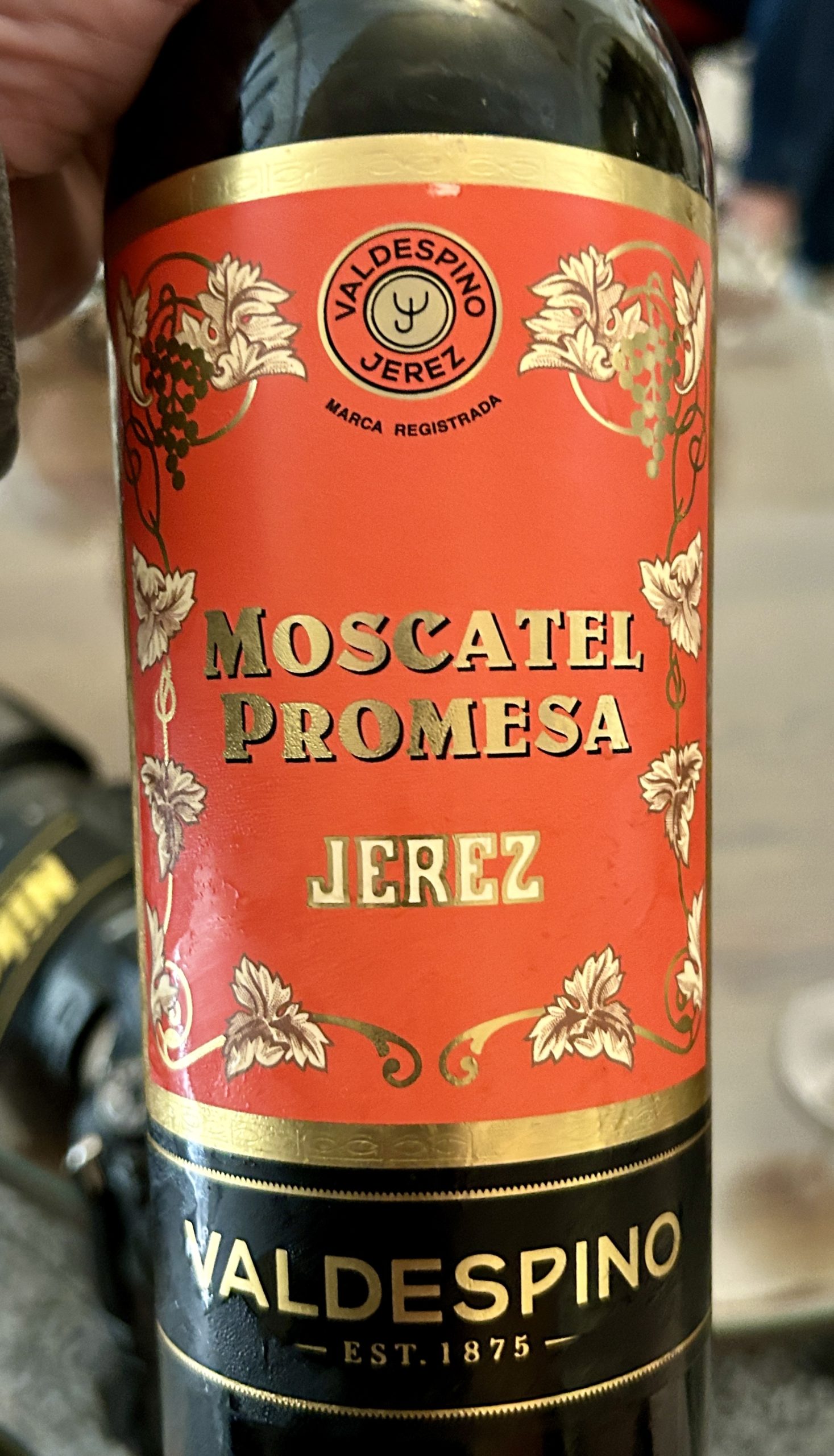
Theoretically I really should not have liked our last wine Valdespino El Candado as it was the sweetest of the lot, made entirely with the super sweet Pedro Ximenez grape, but Wine Spectator rated this as a 93 so it must be good, right? Actually when poured in small quantities over vanilla ice cream it is fantastic. I don’t think I could drink a glass of it, but as a truly dessert wine on top of dessert, it’s just fine.
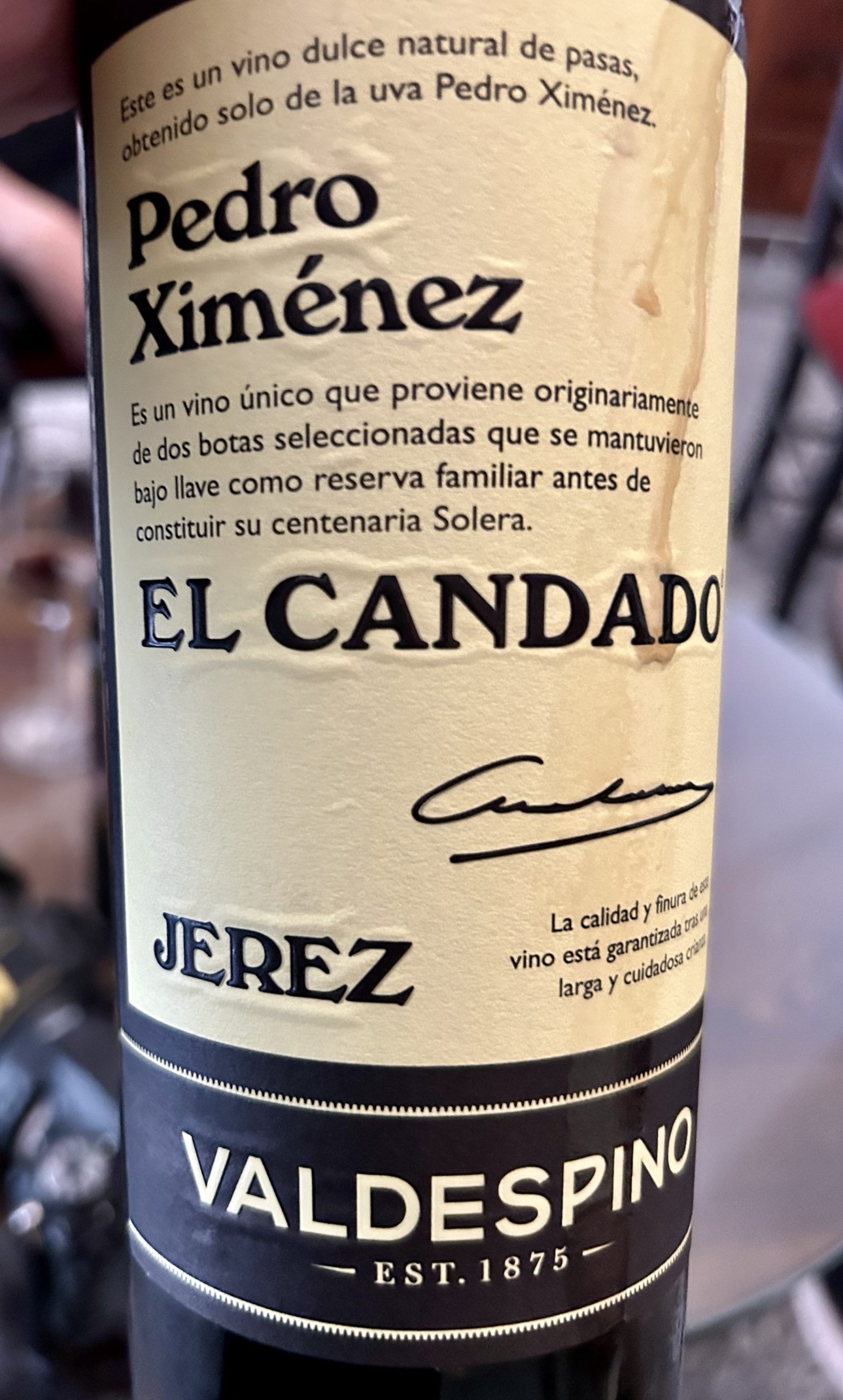
We said our goodbyes to Juliana secure in the knowledge that we were all now sherry aficionados (well at least in our own minds anyway) and headed back to the centre of Jerez.
Tabanco El Pasaje

Lola, our Jerez guide knew that the sherry tasting had to be followed up with more of the same thing accompanied by tapas and she took us to the oldest sherry bar in the city, Tabanco El Pasaje. These bars go by the name of tabancos and are known for not just for sherry, but flamenco and tapas as well. The place was packed in anticipation of a flamenco dance that was about to begin, but Lola had reserved seats for us and we had a front row table.
What distinguishes a tabanco from a bar that deals mostly in wine and beer are these casks filled with six varieties of sherry. From a picture on the establishment’s website it seems this triangle of casks or one like it has been in place here for almost a century.
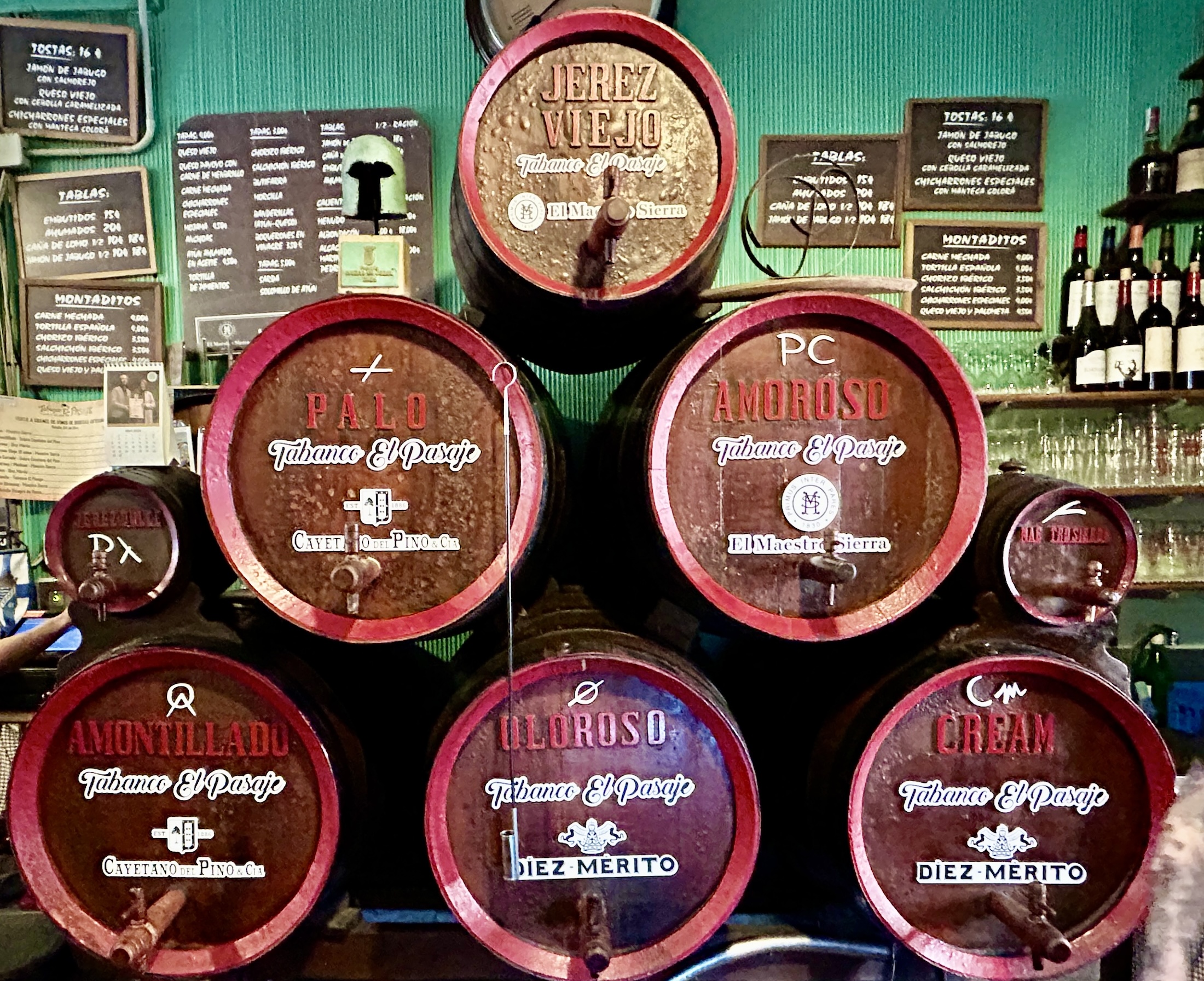
Lola procured a bottle of fino and oloroso which were not the last we polished off while enjoying many varieties of tapas.
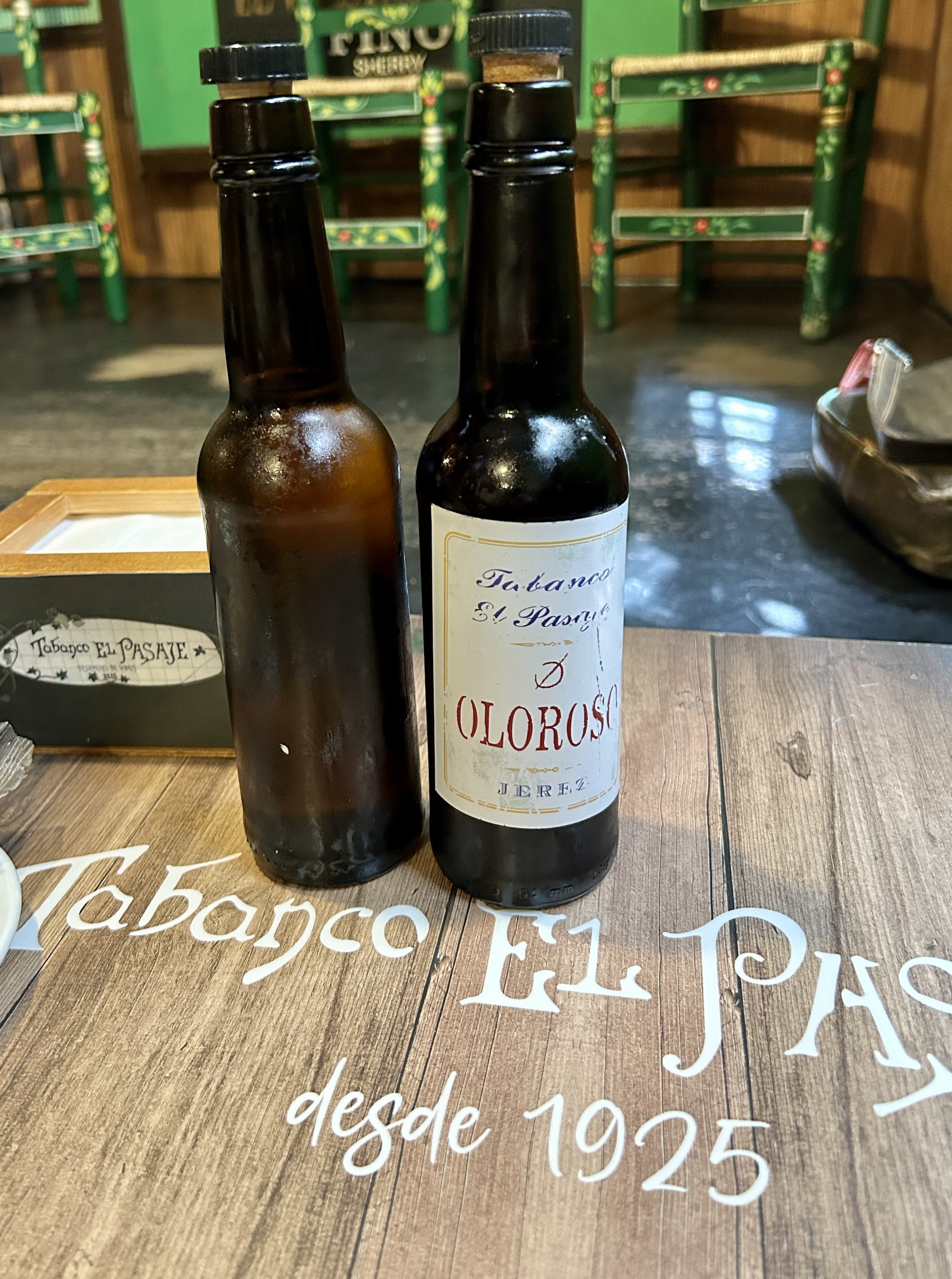
Here’s something I didn’t know until Lola explained it to us. Tapas does not refer to a small appetizer served with wine, but rather originated as a verb meaning ‘to cover’. Traditionally the Spanish would cover their glass of wine or in our case sherry with a slice of meat or bread to keep the flies out of it. Over the centuries it evolved to become associated with the food rather than the practice.
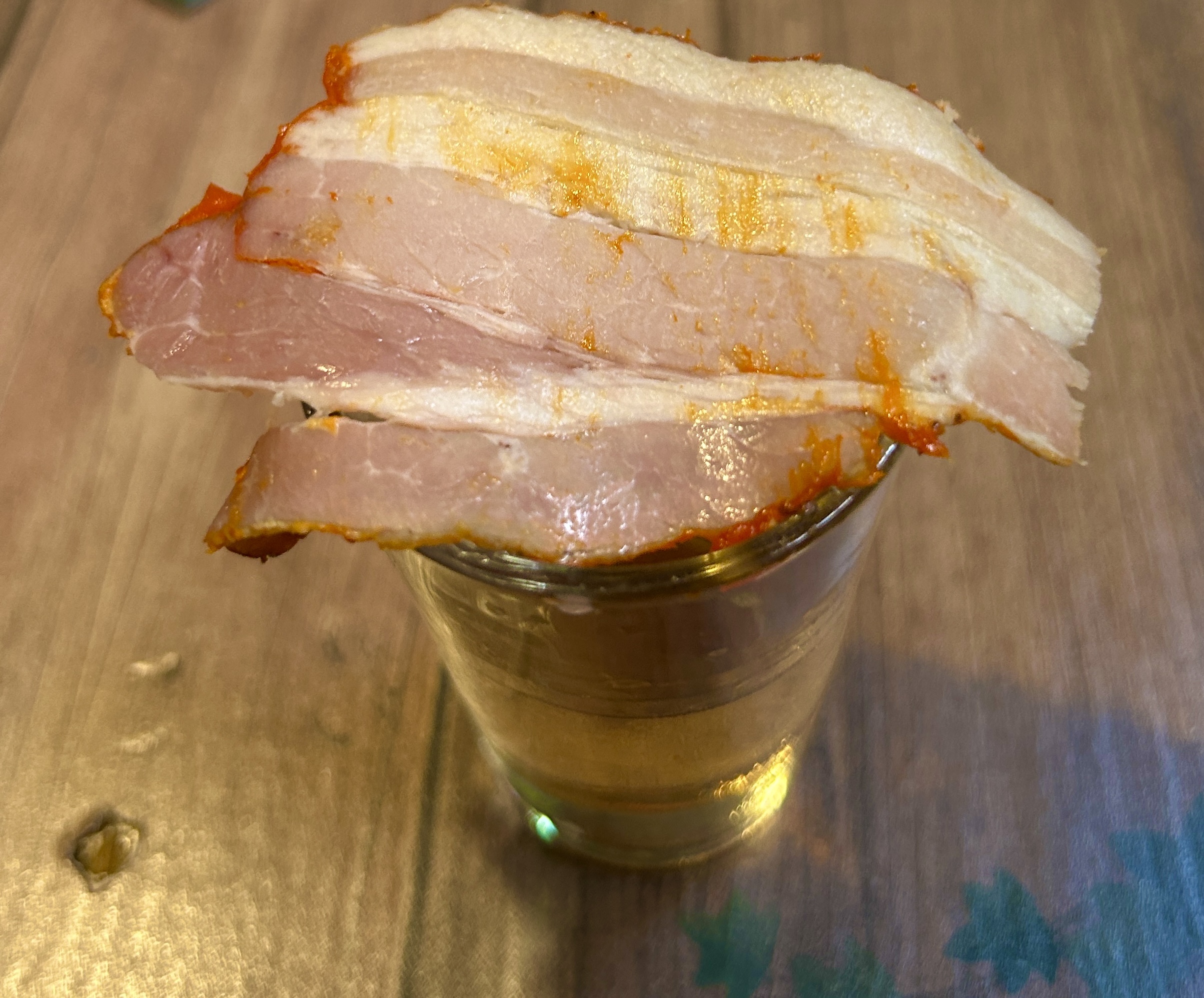
The tapas at Tabanco El Pasaje were among the best I have ever tasted and right up there with the ones I wrote about in this post from Nerja a few years ago. Particularly outstanding were the artichokes with sherry vinegar, a dish that is the essence of Jerez.
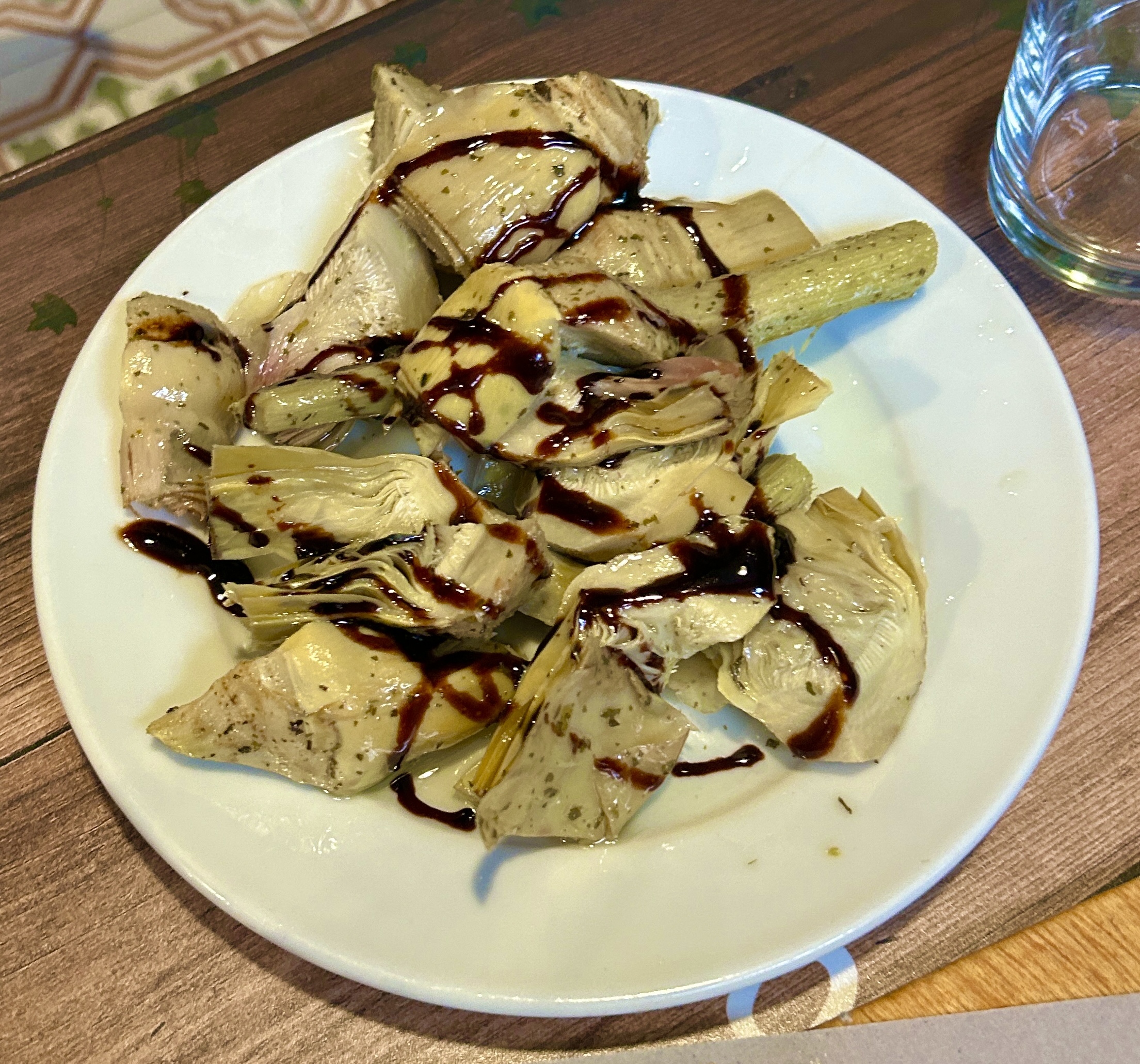
As I said, we had a front row seat for the flamenco performance and that combined with the food, drink and the great company of Lola and my fellow SATW members made this visit to Jerez truly one to remember for a long, long time.
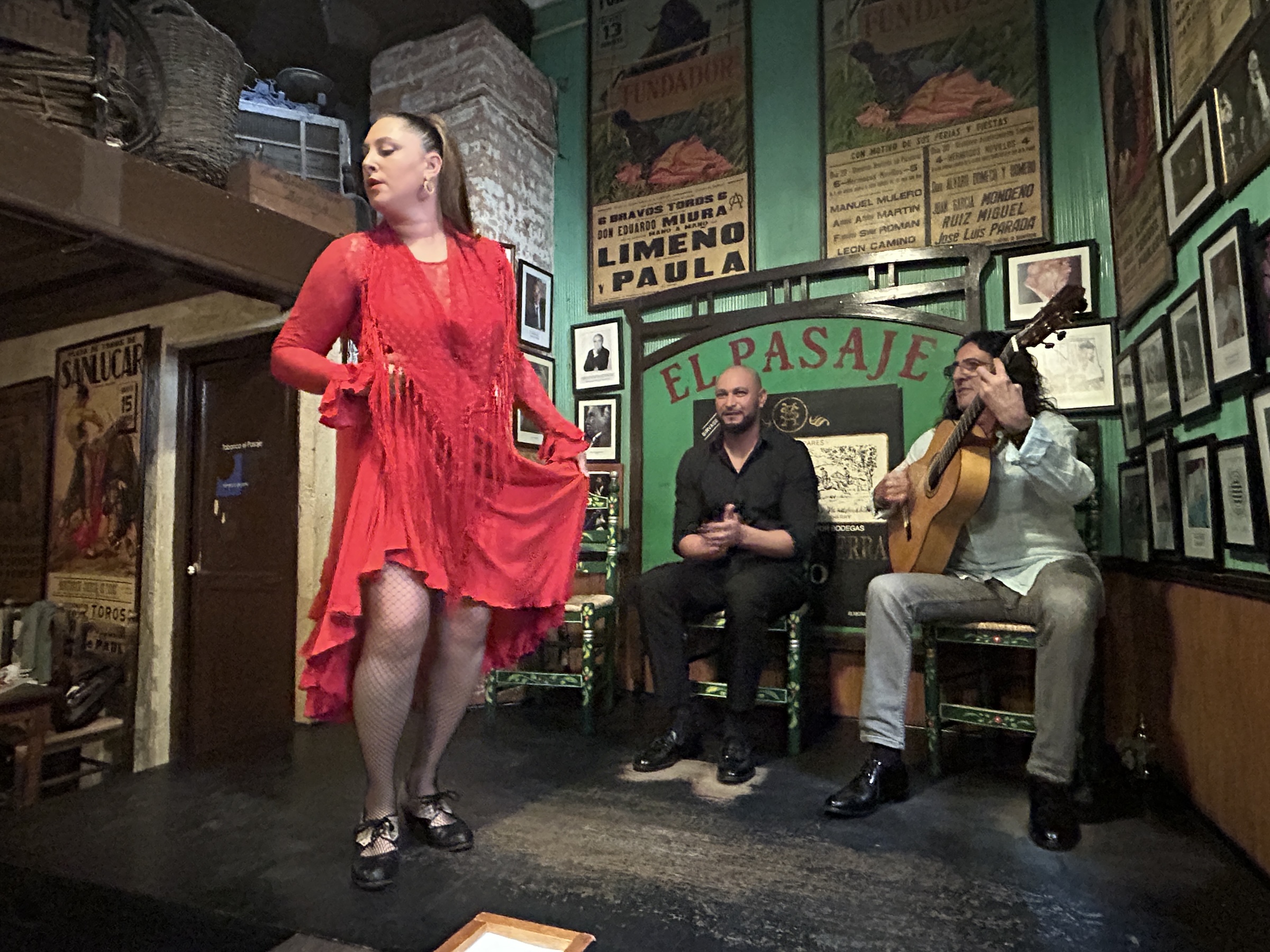
My all too short visit to Andalucia is over and tomorrow I will make my way to Vienna for a three night stay before heading to Cyprus for two weeks.


